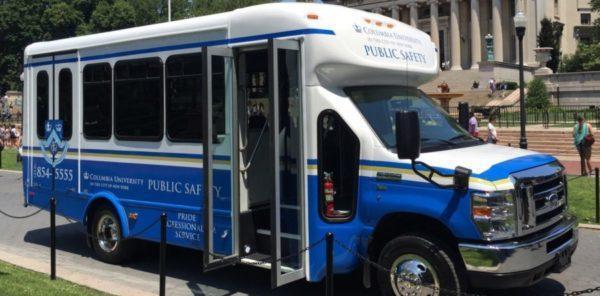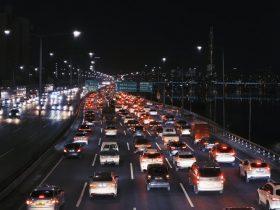Creating solutions to the so-called “first mile/last mile problem” helps make that possible. It means providing a way for workers to both get to the train — the first mile — and then how to get them to work — the last mile.
This is true in many parts of the state, but especially in the fast-growing region west of Boston.
Paul Matthews is the executive director of the 495/Metrowest Partnership, a coalition of 35 communities from Westford to Foxboro. For years, he and others have been trying to make the commuter rail work, not only for businesses in Boston, but also the other way around — for the growing industries along Route 495. But Matthews said to make the train truly viable, you must get people from train stations to their workplaces.
“This is New England,” Matthews said. “You can’t get off the train in January and walk 2.5 miles to your place of work. You need a way of stepping onto a shuttle and getting there.”
That shuttle most often takes the form of a van seating up to 16 people. But providing those shuttles to the almost 200,000 people working in MetroWest but living elsewhere is requiring people to get creative.
Halley thinks the MBTA could do a lot more to promote what’s called “reverse commuting” by lowering, or even eliminating, outbound fares.
“The trains are virtually empty,” Halley said. “Why even worry about charging those people coming out? Once they establish the ridership base, they can start increasing those fares, but initially they should be encouraging people to come out here. The businesses out here need them.“
In some cases, the employees need the shuttles as well. Peter Lowitt, who manages economic development for the office park at Fort Devens in central Mass., said many of the 130 reverse commuters at Devens depend on the commuter rail and the shuttle.
“In many cases, but for the shuttle bus, those folks wouldn’t be employed,” Lowitt said. “I was speaking with a gal who commutes out from Cambridge and she said she wouldn’t have taken the job if the commuter rail wasn’t here.”
MBTA officials have acknowledged they haven’t done enough to promote reverse commuting, but are now talking about testing reduced fares for reverse commuters — though not on all rail lines, and not on the Fitchburg train that serves Devens.
The state is also pledging to give more support to the shuttle van programs as a way to solve the first mile/last mile problems. Earlier this month, the MassDOT announced it would give $1.5 million to organizations like CrossTown Connect that can come up with creative solutions.
An example is the Maynard/Acton Commuter Shuttle, which connects people to the South Acton Train Station two and a half miles outside of town. It also transports workers coming in from Boston to their jobs in Maynard. Usage of the shuttle has grown in three years, from 100 rides per month up to 800.
The commuter shuttles that run in Maynard, Acton, Littleton and four other nearby towns are examples of the kinds of collaborative approaches that Transportation Secretary Stephanie Pollack says the state is looking to fund.
“The reason people aren’t trying other ways of commuting to work and driving by themselves is not lack of information. It’s actually lack of services,” Pollack said at a recent transportation conference.
Some advocates think the state could be doing more to promote these first mile/last mile services, like shuttles. Once people learn the shuttles are there and start using them, they keep using them. And as ridership grows, it means more people are getting to and from work without using their cars.
That fulfills what Pollack says is today’s transportation imperative: “To move more people in fewer vehicles.”
To read more about mobility options, we recommend you to read this: With new mobility options, Detroit goes multimodal


















